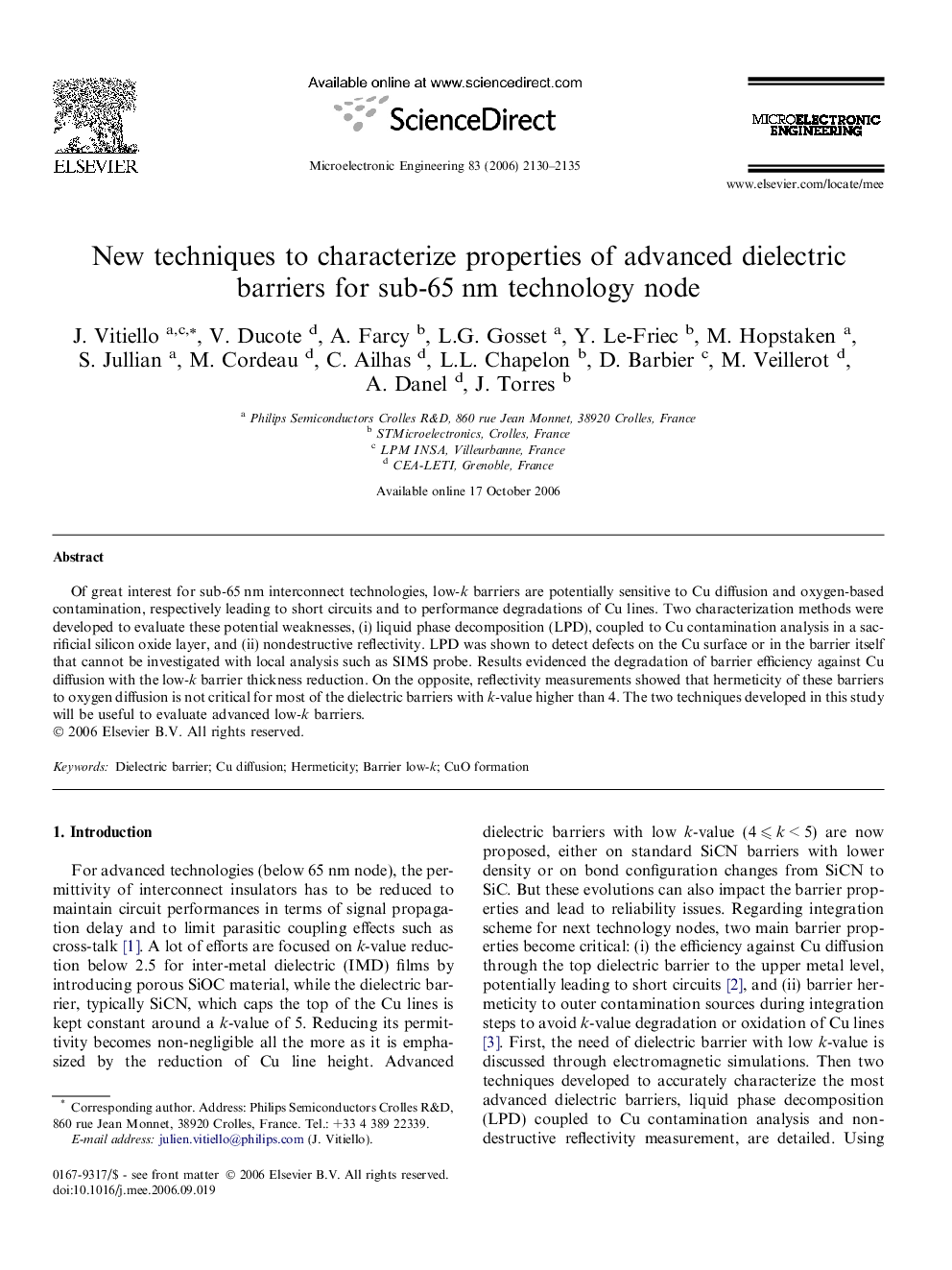| Article ID | Journal | Published Year | Pages | File Type |
|---|---|---|---|---|
| 541853 | Microelectronic Engineering | 2006 | 6 Pages |
Of great interest for sub-65 nm interconnect technologies, low-k barriers are potentially sensitive to Cu diffusion and oxygen-based contamination, respectively leading to short circuits and to performance degradations of Cu lines. Two characterization methods were developed to evaluate these potential weaknesses, (i) liquid phase decomposition (LPD), coupled to Cu contamination analysis in a sacrificial silicon oxide layer, and (ii) nondestructive reflectivity. LPD was shown to detect defects on the Cu surface or in the barrier itself that cannot be investigated with local analysis such as SIMS probe. Results evidenced the degradation of barrier efficiency against Cu diffusion with the low-k barrier thickness reduction. On the opposite, reflectivity measurements showed that hermeticity of these barriers to oxygen diffusion is not critical for most of the dielectric barriers with k-value higher than 4. The two techniques developed in this study will be useful to evaluate advanced low-k barriers.
